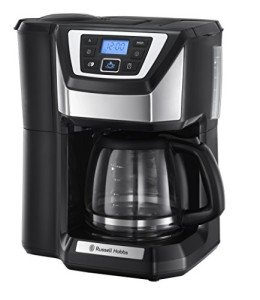10 Apps To Help Control Your Espresso Machines
A Comprehensive Guide to Espresso Machines: Types, Features, and FAQs
Espresso machines have ended up being a staple in coffee culture, captivating both lovers and casual drinkers alike. As the demand for high-quality coffee increases, comprehending the variety of espresso machines readily available and their functions becomes essential. Recommended Studying aims to supply an extensive expedition of espresso machines, covering their types, functionalities, and what to think about when purchasing one.
Kinds Of Espresso Machines
Espresso machines can be found in numerous designs, each with unique features, benefits, and compatibility with various brewing methods. Listed below, we discuss the main kinds of espresso machines available on the market:
Type
Description
Target User
Handbook Espresso Machines
These need the user to physically operate the machine, providing total control over the brewing procedure.
Coffee perfectionists and enthusiasts
Semi-Automatic Machines
These machines automate the water pressure but need manual input for brewing time.
Intermediate users
Totally Automatic Machines
These machines do whatever instantly, from grinding the beans to brewing the coffee.
Hectic professionals
Super-Automatic Machines
These machines are completely automated and can produce different coffee beverages with very little user intervention.
Users looking for benefit
Pill Espresso Machines
These use pre-packaged coffee pills to streamline the brewing process.
Casual drinkers
Industrial Espresso Machines
Durable machines designed for high-volume use, typically found in coffee shops and dining establishments.
Cafe owners and enthusiasts
1. Manual Espresso Machines
Manual espresso machines use unmatched customization for coffee lovers who value the art of developing. Users should practice techniques such as tamping and pump pressure to produce the best shot of espresso.
2. Semi-Automatic Machines
These machines strike a balance between user control and automation. They automate water circulation however require the barista to manage the brewing time. Easy To Clean Coffee Machines -automatics are popular amongst home baristas who wish to sharpen their skills without the complexity of completely manual machines.
3. Totally Automatic Machines
Completely automatic machines eliminate much of the guesswork included in brewing. They grind, dosage, and extract espresso with one touch of a button, making them best for users who value speed and consistency.
4. Super-Automatic Machines
Super-automatic machines take benefit to the next level. They can prepare an excellent selection of drinks, from espresso to cappuccino, with little to no user input, making them ideal for hectic households or work environments.
5. Pill Espresso Machines
Pill machines, such as those from Nespresso or Keurig, utilize pre-packaged pods that streamline the brewing process. While they offer convenience, the range of flavor and freshness might be restricted compared to entire coffee beans.
6. Industrial Espresso Machines
Created for heavy usage, business machines are built to produce high-quality espresso quickly and regularly. They typically feature sophisticated innovation like multi-boiler systems and built-in grinders.
Features to Consider When Choosing an Espresso Machine
When picking an espresso machine, purchasers should think about several important aspects, as these will considerably impact the total developing experience and the quality of the coffee produced. Here are crucial features to examine:
Boiler Type
- Single Boiler: Good for those who brew primarily espresso.
- Dual Boiler: Allows for developing espresso and steaming milk all at once.
- Heat Exchanger: Provides high pressure for espresso while allowing steaming.
Mill
- Integrated Grinder: Offers convenience with built-in options for grinding coffee.
- Separate Grinder: Provides flexibility and the alternative to choose the mill best matched to your tastes.
Portafilter Size
- Standard: Usually 58mm, fits most machines and offers excellent extraction.
- Smaller Sizes: Often found in lower-end machines, which might impact taste.
Reduce of Use
- User-Friendly Controls: Essential for novices or hectic individuals.
- Modification Features: Important for lovers who prefer hands-on brewing.
Cleaning and Maintenance
- Removable Parts: Facilitate easy cleaning.
- Automatic Cleaning Systems: Helpful for keeping the machine's efficiency.
Size and Design
- Counter Space: Ensure the machine will fit in your kitchen area.
- Visual Appeal: Consider the machine's general style to match your kitchen area decoration.
FAQs about Espresso Machines
What is the distinction between espresso and regular coffee?
Espresso is brewed by requiring warm water through finely-ground coffee under pressure, resulting in a concentrated shot with an abundant taste and crema. Routine coffee is typically brewed using techniques like drip or pour-over, which utilize bigger coffee premises and produce a lighter flavor.
How do I maintain my espresso machine?
Regular maintenance includes descaling the machine, cleaning the portafilter and group head, emptying the drip tray, and changing any water filters. Automatic machines frequently have integrated cleansing programs.
Can I use regular coffee beans in an espresso machine?
While you can technically utilize regular coffee beans, espresso is best made with beans specifically roasted for espresso. These beans are normally darker and more oily, offering the rich flavor and strong fragrance that espresso is understood for.
How can I enhance my espresso-making abilities?
Practice is crucial! Try out different grinds, tamping methods, and extraction times. Think about utilizing a scale to measure coffee and water specifically. Viewing tutorials online can likewise provide insights into advanced techniques.
What is the typical price variety for a great espresso machine?
Prices can differ considerably based on type and functions. Fundamental manual machines start around ₤ 100, while high-end super-automatic machines can cost over ₤ 2,000. Semi-automatic machines typically vary from ₤ 300 to ₤ 1,500.
Espresso machines use a broad spectrum of options, each accommodating different preferences, experiences, and budget plans. Knowing the varieties offered and the necessary features can assist customers make informed choices that result in delicious, café-quality espresso in the comfort of their homes. Whether one looks for to delight in abundant flavors or requires a convenient developing option, an espresso machine can elevate the coffee experience beyond the daily cup.
